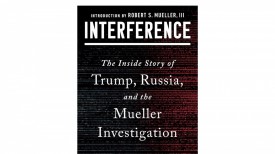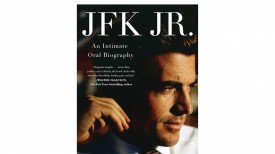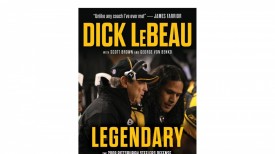Who Won Election 2012 Explained: 'Signal and the Noise' by Nate Silver
Nate Silver's new book, "The Signal and the Noise," shot up to No. 3 on Amazon's Bestseller list. That might have something to do with the fact he just correctly predicted the presidential election for the second time in five years. But, we're just estimating.
A statistician and journalist who writes the FiveThirtyEight blog for the New York Times website, Silver has become one of the most divisive figures in modern politics. He first gained public recognition for skilled baseball stat analysis, developing PECOTA, a system for forecasting the performance and career development of Major League Baseball players, which he sold to and then managed for Baseball Prospectus from 2003 to 2009.
Silver gradually transitioned his flair for baseball stats into politics, starting a blog in 2008. Silver's impeccably accurate predictions for the 2008 presidential election - he correctly predicted the winner of 49 of the 50 states - won him further national attention and acclaim.
Silver is a part of a new stats revolution taking place in political poll tracking. Much in the same way sabermetrics upset the old guard of baseball in "Moneyball," not everyone in politics is convinced of Silver's methods.
"Nate Silver says this is a 73.6 percent chance that the president is going to win? Nobody in that campaign thinks they have a 73 percent chance - they think they have a 50.1 percent chance of winning. And you talk to the Romney people, it's the same thing," Joe Scarborough, host of "Morning Joe" on MSNBC, said
"Both sides understand that it is close, and it could go either way. And anybody that thinks that this race is anything but a tossup right now is such an ideologue, they should be kept away from typewriters, computers, laptops and microphones for the next 10 days, because they're jokes."
"I think I get a lot of grief because I frustrate narratives that are told by pundits and journalists that don't have a lot of grounding in objective reality," Silver told Charlie Rose.
Silver's "Signal and the Noise" trumpets that same humble, as close to objective truth as possible worldview. Silver recognizes that objectivity is likely impossible, but says that we can come close to attaining by becoming more accurate prognosticators.
"This book is less about what we know," Silver writes, "than about the difference between what we know and what we think we know."
He continues, "... I'm of the view we can never achieve perfect objectivity, rationality or accuracy in our beliefs," Silver writes. "Instead we can strive to be less subjective, less irrational and less wrong. Making predictions based on our beliefs is the best (and perhaps only) way to test ourselves. If objectivity is the concern for a greater truth beyond our personal circumstances, and prediction is the best way to examine how closely aligned our personal perceptions are with that greater truth, the most objective among us are those who make the most accurate predictions."
If anything could have vindicated Silver, it was the 2012 election. The author's predictions this time around were even more accurate. Silver was only giving Obama a 70.3 percent chance of victory back on Oct. 22, which evolved into a 90.1 percent chance of victory by the evening of Nov. 6. By the end of election night, Silver had correctly predicted the winner of all 50 states and the District of Columbia.
© 2023 Books & Review All rights reserved.
Popular Now
1
Books to Read After 'Fourth Wing': Top Picks for Fantasy and Romantasy Fans

2
‘The Secret Public’ by Jon Savage Book Review: An Insightful Look Into the LGBTQ Influence

3
Stephanie Regalado's 'If They Only Knew' Column Is Now A Book, Unleashing 60 Anonymous True Stories to Empower Women

4
'No Wire Hangers' Scene That Almost Did Not Happen: New Book Reveals Faye Dunaway's Struggles

5
Rare First Edition of Aphra Behn's Novel 'Oroonoko' Discovered in Kent: A Historic Literary Find

Latest Stories
Book Reviews
‘The Secret Public’ by Jon Savage Book Review: An Insightful Look Into the LGBTQ Influence

Book News
Stephanie Regalado's 'If They Only Knew' Column Is Now A Book, Unleashing 60 Anonymous True Stories to Empower Women

Book News
'No Wire Hangers' Scene That Almost Did Not Happen: New Book Reveals Faye Dunaway's Struggles

Book Reviews
‘The Perfect Couple’ by Elin Hilderbrand Book Review: A Captivating Summer Mystery

Book News
New Book ‘The Franchise’ Reveals Penguins President Kyle Dubas’ ‘Biggest Mistake’ as Maple Leafs GM










